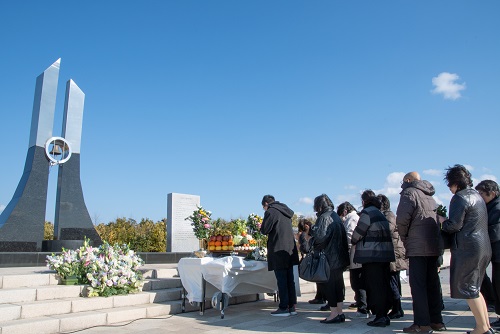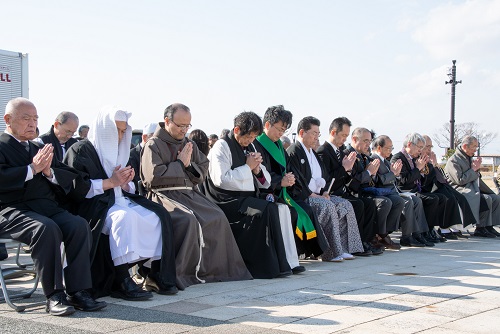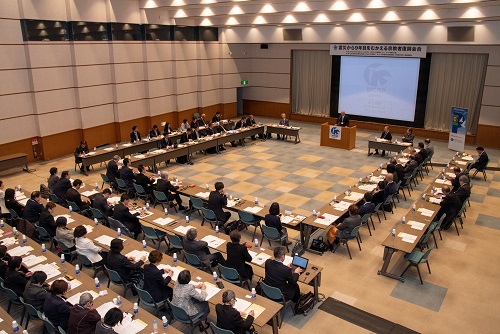
Key to Mental Care - Attentive Listening
Daily Preparedness Matters Most
RfP Japan Looks Back Eight Years of Reconstruction Assistance
Religions for Peace (RfP) Japan organized a two-day conference in Sendai
city in March to examine their achievements in the past eight years in
supporting the victims of the Great East Japan Earthquake and assisting
the reconstruction of the affected area. Some 130 religious leaders, aid
workers, community leaders, and scholars discussed what lessons should
be learned and shared, and how to keep on assisting the affected area in
the future.
One significant takeaway from the conference; it is the daily activities
that matter most in emergency situations. Natural disasters don’t wait
to come until people forget them. They may come anytime now. So, be prepared.
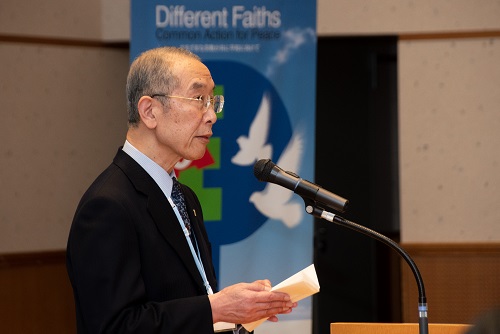
The conference was titled “Religious Leaders’ Assistance to the Reconstruction in its Ninth Year.” In its opening remark, the Most Rev. Nichiko Niwano, the President of the WCRP Japan and the President of the Rissho Kosei-kai, portrayed the facts on the ground. “The reconstruction works in the affected area appear to make progress on the surface. But people suffered from the disaster still live with a lot of troubles,” he observed. “Hundred people have hundred different sufferings. Each of them needs tender loving care. That’s where the religious leaders have a role to play,” President Niwano stressed. He expressed his anticipations to make the conference as “an opportunity to take a look at the significance, challenges and the future way of the religious leaders,” adding that the proposals and activities by religious leaders in reconstruction assistance “must be based on religious wisdom.”
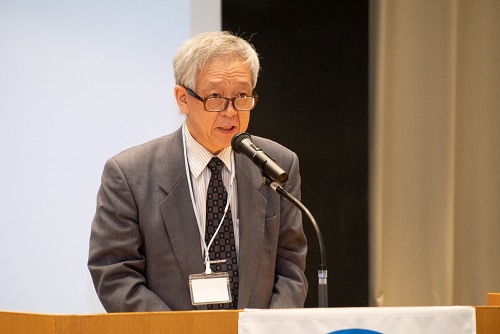
Rev. Niwano was followed by two other speakers in the opening ceremony.
Dr. Susumu Shimazono, a theological scholar and the chief coordinator for
the Japan Religion Coordinating Project for Disaster Relief (JRPD), recalled
that there was certain hesitation among people in the affected area to
accept relief offers by individual religions, but the people were “more
comfortable with offers by the interfaith groups.” He emphasized that that
was the advantage of the organization like RfP. He said the disaster relief
by religious institutions became common in Japan after the 1995 Great Hanshin
Earthquake. “Socially vulnerable people are put in a difficult situation
when natural disasters occur. Religious leaders have a role to play under
such circumstances. Natural disasters reveal the problems of our society.
In emergency situations, religions face a fundamental question that how
they were connected to the community in normal time,” he said.
The third speaker, Rev. Masanori Kondo, President of the Religious Corporation
Liaison Group in Miyagi Prefecture, explained how his group in the affected
area started and expanded the coordination with RfP. He too, said although
the reconstruction works such as building houses, bridges and roads are
visible, “mental care of the affected people still remains to be a critical
issue.” “The importance of mental care is only growing,” he said.
Most Rev. Munemichi Kurozumi, the leader of the Great East Japan Reconstruction
Task Force at the RfP, introduced the themes for the two-day conference.
He reiterated the three pillars of the RfP reconstruction assistance; prayer
for the lost lives, solidarity for the living people, and the responsibility
for the lives to come. He expressed his hope that the conference would
bring about ideas that all the stakeholders could share for their future
activities in reconstruction assistance.
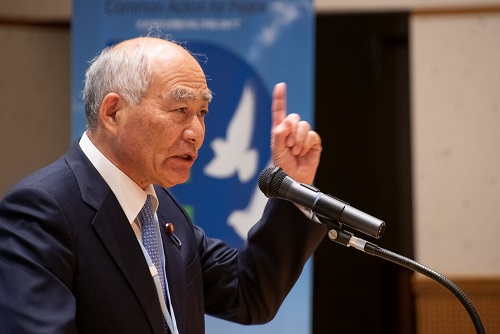
The keynote address was made by the former reconstruction minister Mr.
Masayoshi Yoshino, whose constituency is very close to the defunct Fukushima
No.1 nuclear power plant. He talked about his visits to 26 shelters scattering
all over Japan where more than 50,000 evacuated people from the affected
area still living. He said he realized the importance of “listening attentively”
to the people to understand their sufferings. The government is closing
down the Reconstruction Agency in two years. “We have accumulated various
know-how to deal with natural disasters. I would like to continue assisting
the reconstruction as a lawmaker after the Agency ceases to exist,” he
emphasized.
Three panel discussions based on the three pillars introduced by Rev. Kurozumi
took place at the conference.
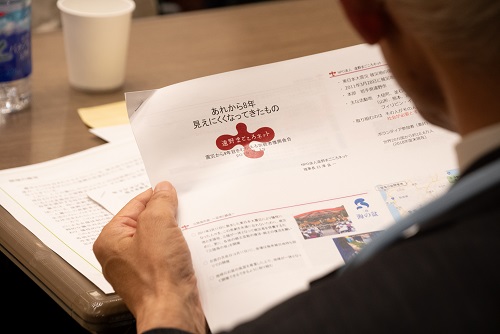
In the first session, three panelists recalled their activities to assist
reconstructing communities and personalities that were damaged by the disaster
from different perspectives. Mr. Ryoichi Usuzawa was hit by the tsunami
at home in Oozuchi town in Iwate prefecture on March 11, 2011. He narrowly
survived and started to support the others. “It’s so sad to lose loved
ones. But I feel their souls remain very close to us,” he said. His community
has an annual ritual to commemorate the ancestors in summer. It has a long
history. He tried not to suspend the ritual because of the earthquake.
He finds the ritual as a significant symbol to unite the residents. “I’d
like to carry on this ritual as a down-to-earth event deeply rooted to
the community,” he declared. Mr. Hirohide Matsuda, a journalist at local
Kahoku Shimpo newspaper, explained how he and his colleagues ran a series
of 62 feature stories about four years ago. He wanted to shed lights on
the clinical religious teachers, or interfaith chaplains in the series,
he said. The idea of clinical religious teachers was not very common in
Japan before the 2011 earthquake. The education and the training of them
started at Tohoku University in Sendai city several months after the earthquake
by an initiative of a Christian pastor. “I think it is worth mentioning
that the process of establishing clinical religious teachers in Japan started
in the affected area,” Mr. Matsuda said.
In the second session, Rev. Teiou Kaneda, a Buddhist monk and the leader
of the activity “Café de Monk”, recalled his activities of “attentive listening.”
After the earthquake, he started the café, which is a moving coffee shop
on a small truck. He visited various places on the truck “just to listen
attentively to the people” in the affected area. “I faced a menacing reality
that made any religious language meaningless,” he said, recalling his encounter
with the people with broken hearts. What he learned was the importance
to “open and soften” those hearts by listening carefully to them. “Care
is the art of weaving” people’s hearts, he said. Rev. Kaneda reminded that
the earthquake happened when suicide was a serious social issue. “Japan
had and has structural problems. Religious leaders must work on correcting
those strains. We have to ask ourselves what religious leaders must ask,”
he emphasized.
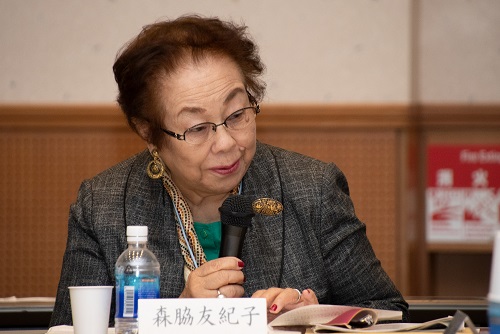
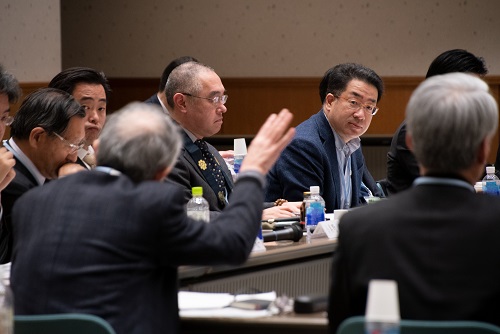
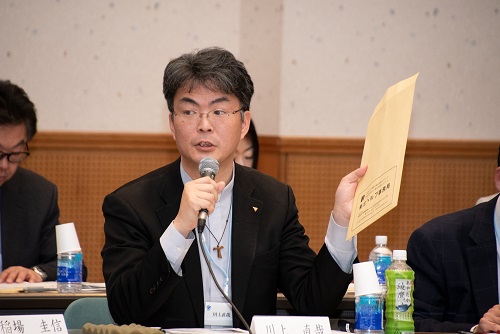
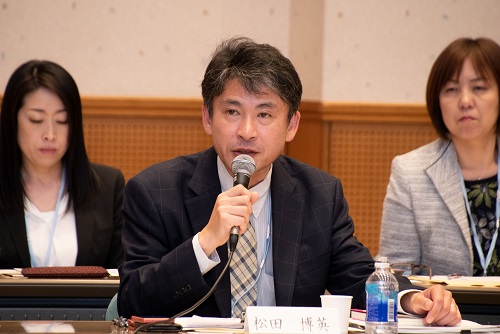
In the third session which took place on the second day, five panelists
shared their experiences to work with local governments, to assist foreigners
and social minorities among other things.
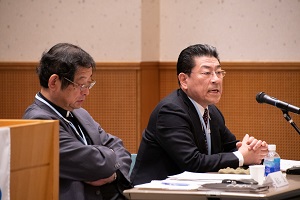
Rounding up the two-day discussions, Rev. Kurozumi explained about the
difficult decision by the RfP to adjourn its reconstruction assistance
by the end of FY2018. “We have funded more than 250 projects in the past
five years. We will not be able to provide financial support anymore. But
we would like to continue helping the local activities in one way or another,
as those were born and grown in the people’s network that we helped to
create,” he said. RfP will keep supporting “Fukushima 100 years Fund” for
the reconstruction, he added.
In the final remark, Most Rev. Makoto Uematsu, Chair of RfP Japan and the
Primate of The Nippon Sei Ko Kai, the Anglican Church of Japan, said, “We
are putting a period to our assistance today. But it doesn’t mean this
is the end of our activities. We have to ask ourselves how we can make
a difference very seriously. How can we walk along with all ranks in our
society? I’d like to think about that with all of you.”
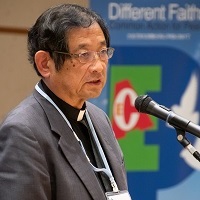
The Great East Japan Earthquake happened on March 11, 2011. Three prefectures
on the east coast of the northeast region of Japan - Fukushima, Miyagi,
and Iwate, suffered most. The strong tsunami caused a meltdown at the Fukushima
No.1 nuclear power plant that led to an unprecedented nuclear disaster.
According to the National Police Agency, 15,897 people died and 2,533 people
are missing as of early March this year. More than 3,700 people committed
suicide after the earthquake, according to the National Reconstruction
Agency.
